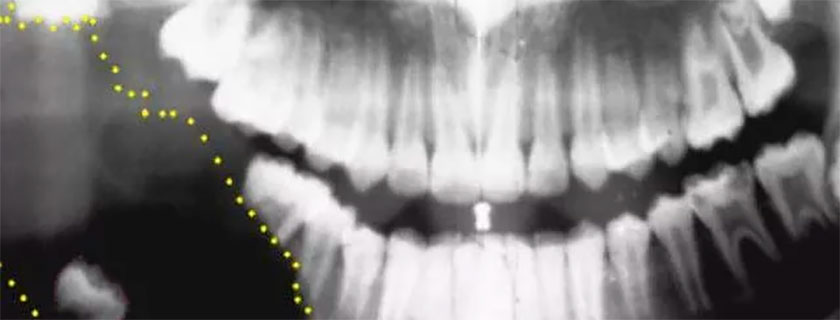
Cavities that can be located in soft tissue or bone, sometimes contain mashed fluid, and are covered with tissue are defined as “cysts”. They grow by expanding in the region they are in, but the growth is slow. Although cysts can form anywhere on the human body, they are most common in the jaws. They are found more frequently in the jaws than in other bones of the body. Cysts occur when the dental lamina in the jaws or the remnants of the enamel organ of the tooth proliferate.
FAQ
How Are Jaw Cysts Diagnosed?
Jaw cysts may originate from dental structures or from a completely different embryological origin (such as intraoral epithelium). Although it is usually asymptomatic;
- dental or gingival problems
- discharge into the mouth
- bad taste and odor
- Painless swellings noticed in the jaw or on the edges of the teeth are reported as common complaints.
In advanced cases;
- Trismus (unable to open mouth)
- loss of feeling
- loosening of the tooth
- Pathological fractures may be encountered.
Although pain in the jaw and tooth is not very common, the pain manifests itself more as a sign of infection.
Jaw and mouth cysts initially grow secretly because they do not show any clinical signs. They are usually discovered incidentally on X-rays of the jaw. When they reach a certain size, swelling begins to occur in the patient’s chin and this swelling gradually grows. In such cases, the patient applies to the doctor because he is uncomfortable with the swelling and it is determined that there is a cyst.
If they reach very large sizes and go unnoticed, they can even cause self-fracture in the jaw. Clinical, radiographic and histopathological findings are evaluated together for a correct diagnosis.
Radicular cysts are more common in the anterior maxillary region, follicular cysts are more common in the mandibular and maxillary posterior regions, and residual cysts are more common in the maxillary posterior region.
How Are Jaw Cysts Treated?
How is Jaw Cyst Surgery Performed?
- In jaw cyst surgeries, two basic methods called enucleation and marsupialization are used;
- Enucleation is the removal of the cyst as a whole and preferably in one piece. In the procedure performed with local or general anesthesia, the gingiva is lifted and after the cyst is cleaned, the area is closed with stitches.
- Very large cysts are first reduced and then surgically removed. These surgical procedures are marsupialization and drainage.
- Marsupialization procedure is usually applied for large cysts. The fluid in the cyst is drained through a small hole in the area, and the pressure in the cyst is reduced. The cyst, whose pressure decreases, shrinks in this way. The cyst is then surgically removed.
- In the drainage process, a drain is placed inside the cyst and the cyst is reduced. The shrinking cyst is removed by surgical procedure.
- If the tooth is left in the mouth after the surgical procedure, root canal treatment is performed. If the tooth was extracted with the cyst, implant application can be applied after the area heals.
Are Jaw Cysts Dangerous?
Should Jaw Cysts Be Operated? What Happens If Not?
How Is The Process After Jaw Cyst Surgery?
The process after chin surgery should be carefully monitored by the maxillofacial surgeon. The physician may recommend the use of antibiotics, painkillers, mouthwash. The patient should use their medications correctly, pay attention to oral hygiene, eat soft foods as long as the maxillofacial surgeon deems appropriate, avoid movements that will damage the surgical area, be careful not to hit the chin, and not neglect to have a checkup.
Are there any complications that may occur after the treatment?
Some cysts are very likely to recur. These cysts are fertile according to their type. These cysts, which we call keratocysts, are cysts with a high probability of recurrence even if they are operated very well. Some cysts cause defects in the jaw bones when treated late. Implant and tooth construction in these areas can sometimes become difficult.
Are Jaw Cyst, Tooth Cyst, and Gum Cyst the Same?
They are not the same. Jaw cysts are cysts that form inside the jawbone. Dental cysts and gingival cysts are cysts that form in the soft tissue of the gum and mouth. Soft tissue cysts are more benign lesions than jaw cysts. They are usually treated because they are clinically noticed by the patient.
How Much Are the Prices of Jaw Cyst Surgery?
There is no definite price range for jaw cyst surgery prices. In order to determine the price, the patient’s jaw examination should be performed. Jaw surgery prices vary, especially according to the clinic where the treatment is applied, the experience of the doctor and the progress of the disease. It is extremely important that you apply to specialist and experienced physicians in order to perform your oral and maxillofacial surgery treatment correctly.